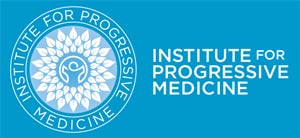LDL-Cholesterol: How Low Should We Go?
The current pharmaceutical-influenced guidelines from the National Cholesterol Education Program are already focused on LDL-cholesterol (bad cholesterol) as a measure of risk and targets for therapy. These guidelines suggest that therapy should begin in everyone with an LDL-cholesterol level above 160 and should reach targets as low as 100 for secondary prevention or in diabetics. And even while these guidelines discuss the use of therapeutic lifestyle changes, along with recommendations of diet, exercise and the increased use of soluble fiber and plant sterols; most clinicians choose a lipid-lowering pharmaceutical drug to accomplish the target. Statins are often used because they have the most profound effect on LDL-Cholesterol.
After these guidelines were published, research revealed two general trends. The first is recognition by many clinicians and researchers that other factors play a major role in cardiac disease risk reduction and must be addressed in tandem with other laboratory testing markers ( LDL-cholesterol is often not even elevated in metabolic syndrome patients!). The role of insulin-resistance, obesity, inflammation and elevated blood sugar levels are just a few of the many components which need to be addressed when dealing with at-risk patients. Robust data suggests that lifestyle changes (diet, exercise, stress management, etc.) have incremental effects on each of these risk-factors without the risk of side-effects that are common with pharmaceuticals.
At the same time, the second trend has been pharmaceutical companies sponsoring clinical trials attempting to maximize the use of prescription drugs. Many clinicians already advocate target LDL-Cholesterol levels as low as 70 in order to reduce risk. Proponents of this model suggest that risk will continue to be reduced until LDL-Cholesterol is lowered to a level of 50. Later this month at the American Heart Association meeting, the results of the JUPITER trial will be announced. This trial, if the rumors are correct, will lead to many clinicians advocating statin therapy for primary prevention in patients even when LDL-Cholesterol is already below 100 if CRP levels are above 2 (CRP is another marker that measures inflammatory processes in the body). While the current panel is beginning to convene to determine the next set of guidelines, the JUPITER trial data will likely influence guideline recommendations. We should anticipate that the new guideline recommendations use therapeutic goals which will seem to be only reachable through aggressive use of drug therapy.
Millions of patients continue to demand a natural and safe alternative to the drug based approach to lowering cholesterol and other cardiac risk factors. At the Institute for Progressive Medicine, our doctors use an effective, multi-faceted protocol to help patients reduce these risk factors and reach their health goals, often without the use of pharmaceutical medications.
Source: Baseline characteristics of participants in the JUPITER trial, a randomized placebo-controlled primary prevention trial of statin therapy among individuals with low low-density lipoprotein cholesterol and elevated high-sensitivity C-reactive protein. Am J Cardiol. 2007 Dec 1;100(11):1659-64.
Adolescent Metabolic Syndrome and Cortisol
Over-production of the stress hormone cortisol has been linked with nearly every component of the metabolic syndrome in adult populations (hypertension, insulin resistance, central body fat, metabolic conditions favoring atherosclerosis). In the past decade, the tremendous increase of obesity in children and adolescents is quite alarming and in some sub-populations, tragic. In a report published earlier this year, researchers found that morning cortisol levels were elevated in overweight Latino adolescents (age 8-13). In fact, morning cortisol levels increased incrementally with each increasing feature of the metabolic syndrome, as the figure below shows.[Pub Med]
Obesity (especially from visceral fat) is an inflammatory condition which drives cortisol levels up. Obese men have a significantly higher cortisol response to stress- leading to an exacerbation of insulin resistance and visceral fat deposits. Cortisol testing should be considered in anyone with metabolic syndrome, or with a body-mass index (BMI) over 28- regardless of age. Improving blood sugar control and reducing stress in these patients earlier can reduce the potential of future decades of chronic illness.

